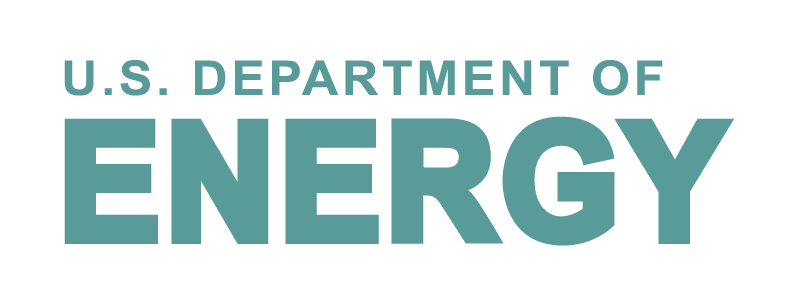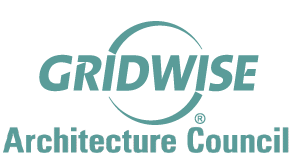FAQs on the GridWise® Architecture Council
Questions on the GridWise® Vision and Technologies
What is GridWise?
GridWise is a vision for the future of the power grid, shared by a growing number of electric system stakeholders.
These stakeholders share a common vision that information technology will profoundly transform the planning and operation of the power grid from central generation down to customer appliances and equipment into a collaborative network filled with information and a myriad of market-based opportunities.
The Department of Energy and the GridWise Alliance (an alliance of leading members of the power and information technology industries) have jointly declared their intention to work together to bring about this transformation sooner, with more impact and greater public good.
What is the GridWise® Vision?
The GridWise vision for the future electric system is built upon the fundamental premise that information technology will profoundly transform the planning and operation of the power grid, just as it has changed business, education, and entertainment. It will form the "nervous system" that integrates new distributed technologies—demand response, distributed generation, and storage—with traditional grid generation, transmission, and distribution assets to share responsibility for managing the grid as a collaborative "society" of devices.
To do this GridWise will:
- Provide the incentive for customer and third-party assets to collaborate with existing grid assets to control costs and improve reliability by revealing the true time- and location-dependent value of electricity.
- Provide the basis for collaboration by allowing the revealed values to be shared in real-time by leveraging broadband communications that are rapidly becoming ubiquitous.
- Provide the means to take advantage of the opportunities for collaboration so revealed, and capture value in return, through rapid advances in distributed controls and e-business applications.
What are GridWise® Technologies?
GridWise technologies are summarized here in three general categories:
- Distributed Resources. These are physical, capital assets that generate, store, or consume electric power and that are not broadly considered or deployed as grid assets at present. Among these are demand response, distributed generation, and electricity storage.
- Communications Technologies. These are the mechanisms for transporting information among all participants collaborating in the operation of the power grid. These include communication media, information security, privacy and authentication, machine to machine, and E-commerce.
- Control and Software Applications. These are the controls and software that utilize information provided through the communication technologies, and an extended set of sensors, to operate existing grid resources and the distributed resources as an integrated system to make the grid more cost effective, reliable and robust. There are numerous potential applications; these include: customer information gateways, smart meters and automated meter reading, demand response and energy management systems, GridFriendly™ appliances/equipment/processes, distribution automation, market operations, autonomous agents for power purchasing, load forecasters, transactive control for distribution and transmission systems , and emergency end-use curtailment.
Questions on the GridWise® Architecture Council Affiliations
Is the Architecture Council part of the Department of Energy, the GridWise® Alliance, or independent?
The GridWise® Architecture Council is an independent effort stemming from a number of related endeavors, including the DOE's GridWise Program (previously Advanced Communication and Control Program). The GWAC is not a formal DOE advisory board. In the context of its engagement in the GridWise vision, the DOE is providing limited financial and logistical support to the Architecture Council. The GWAC Bylaws describe the roles, responsibilities, policies and procedures that govern the operation of the GridWise Architecture Council (GWAC), including the role of the DOE OEDER Director as an ex-Officio GWAC member and the participation of the DOE in the member selection process.
The term GridWise is trademarked for use by DOE and other organizations affiliated with the concepts that it represents. The Department of Energy and the GridWise Alliance (an alliance of leading members of the power and information technology industries) have jointly declared their intention to work together to bring about GridWise transformation, with more impact and greater public good. GWAC member, Ron Ambrosio is currently the Liaison between the GridWise Architecture Council and the GridWise Alliance. The relationship between the GWAC and the GridWise Alliance is maturing with time.
The GridWise Alliance is a 501c6 not-for profit organization. Ultimately, the GWAC might have a home for incorporation with the GridWise Alliance; however, we also need to protect the GWAC's role as an independent, "open" body that is seen as beyond reproach from the influence of any particular set of businesses or funding source. The GWAC also must have the freedom to establish the relationships with other entities that it deems necessary to make it successful.
Is the GWAC US-only or international?
GWAC operational scenarios need to reflect the North American situation initially; however, the DOE and other initiators of the Architecture Council recognize that international corporations, standards bodies, and other organizations will play a major role in providing the direction and where-with-all to enable such a transformation. Membership to the GWAC is not restricted to US citizens or companies. GridWise related activities are also emerging in Europe; as the GWAC progresses, collaborations may lead it to more directly collaborate on international concerns.
Does the GWAC coordinate with other, related programs like EPRI's IntelliGrid Architecture?
The GWAC coordinates with a number of complementary efforts in related fields. Contacts have been made with the oBix standards work in the intelligent building community, NRECA's Multispeak initiative, and architecture efforts in the ISO/RTO area. An important area for coordination is with the EPRI sponsored IntelliGrid efforts. Don Von Dollen, the IntelliGrid Program Manager, is currently the liaison between the GWAC and the IntelliGrid Architecture.
Though their areas of interest overlap, IntelliGrid Architecture emphasizes the impact of information technology and communications to advance the electric utility business. EPRI engages their electric utility base in projects that define and demonstrate enterprise integration approaches based on open standards to create designs and identify best practices that address electric system operations. This work is also concerned with accommodating the rise of distributed energy resources and other external players in the electric system, but more so from the point of view of the electric utility.
The GridWise Architecture Council recognizes the intelligence emerging at the fringes of the traditional system and sees that unleashing new value propositions will drive a transformation in the electric power business and its operations. Developing a strategic view that is shared across a broad set of electricity related industries is an important thrust of the GWAC. As a result of the GridWise vision, the GWAC emphasizes the interfaces between independent parties in a collaborative association. This e-commerce flavor complements IntelliGrid's enterprise integration emphasis.
The GWAC and IntelliGrid Architecture efforts are working together to stay abreast of each others activities and share the results of their efforts. The GWAC offers a body of experts for overarching perspective of IntelliGrid and GridWise advances. This group will work to reduce competing efforts in overlapping areas, and identify gaps for consideration by either initiative. Finally, where conflicting opinions may exist, society benefits from multiple viewpoints that give depth and definition to the complex issues raised by such far reaching initiatives.
Questions on Participating in the GridWise Architecture Council
What are the benefits of GWAC membership?
Active participation in the GridWise Architecture Council offers a unique opportunity to shape the information, telecommunications and control architecture for the future electric system from generation to end-use. Members benefit from discussions, technical support, and workshop presentations that review needs and interoperability trends from relevant sectors of the economy. They have a unique and prestigious chance to influence the strategic role electric energy will continue to play in the future success of this country.
What are the time commitments for council members? Depending upon a member's contribution to the GWAC, we estimate 10 to 20% of their time is needed. We have made this assessment based on experiences reported by similar efforts. The Council is intentionally proposed at 13 members so that a team environment is created to make progress during meetings as well as between meetings. We understand that excellent candidates will already be overcommitted (hard to imagine them excellent otherwise). This is a unique challenge which good people are rising to meet.
Council membership is a serious undertaking that may involve personal sacrifice. It is not a paid position, but one's contributions can have great impact on the future of the nation's economy and security.
Can a council seat be shared? Some companies have inquired about possibilities of having organizational memberships, a shared seat, or a second seat for a member who could represent expertise not covered by the primary council member and alleviate some of the time commitment. The idea of having a primary and secondary representative to the GWAC can be considered in extraordinary circumstances. However, assembling an effective team requires consistent participation by members who provide continuity and develop a collective perspective for the GridWise technical issues. We also have specialists attend council meetings to present and discuss items needing better representation than may be covered by the members.
Is there any support for meeting attendance?
GWAC Members who attend face-to-face Council meetings are expects to cover their travel expenses with limited exceptions on a case by case basis subject to DOE concurrence. Affiliated organizations' willingness to help defray costs and support the GWAC's efforts is greatly appreciated.
What are 'open' seats on the Council?
As the GridWise Architecture Council matures, the structure may be refined. Current representation on the GWAC aims to cover a broad array of sectors: energy (utilities, energy service companies, distributed generation, transmission operations...), IT and telecommunications (integration, internet, b2b, networking...), home/buildings, markets/finance, consumer interests, and regulators. Some seats on the GWAC are not targeted to any one sector because in many cases individual members will contribute knowledge and experiences across multiple sectors. The open seats also allow some flexibility in the Council's composition to accept exceptional contributors or emphasize areas where representation may become important as the Council's activities evolve over time.
How can a standards or trade organization best cooperate with GWAC?
One of the best ways a group can co-operate with the mission and vision of the GWAC is to have a well-established expert with interoperability and standards making experience become a member of the Council. The GWAC's structure acknowledges roles for liaisons to other groups. Some of these roles may be fulfilled by council members themselves, or non-voting individuals may be invited to fulfill such roles. As the Council progresses, convenience and efficiency can point to co-locating meetings with other groups, particularly if one or more council members are also involved in activities of those groups.
Does the Council ever request research studies from outside the Council?
The GWAC may ask for studies or presentations from time to time. This work is contracted to industry, academia, or research laboratories.
Questions on the GWAC Call for Candidates Process
What type of council member are you looking for?
The GridWise Architecture Council Bylaws call for renewing roughly one-quarter of the members each year. GWAC members need to be technically competent and well respected in their area. They will represent the best practices and trends in their industry and bridge ideas between the various members within the council. Externally, they are spokespeople for the vision and directions of the Council and have the notoriety and visibility to reach out into their technical and business community.
A Nominations Committee will review candidacies with the goal to select nominees that will best contribute knowledge and experience in the areas needed for balanced representation on the council. As part of the candidate review process, nominees will be scrutinized regarding the stature and respectability that they hold within their field of endeavor, and their knowledge of communication and control technical issues, as well as existing and emerging solutions. The architecture needs to be rooted in a solid technical base.
The process defined for the Nominations Committee neither differentiates between large or small companies, nor between private, public or academic sectors for any of the seats. Obtaining a broad range of competency and representation of the various sectors is key. The capacity of each member to contribute to the Architecture Council as an individual and as part of the complete Council will be considered.
The Council is a sum of many very different highly qualified individuals from a variety of sectors related to the GridWise vision, so we encourage you to submit your candidacy even if your experience only partially covers the areas described-no single candidate is expected to encompass all of the qualities which will be needed in the GridWise Architecture Council.
How technical is the work of the Architecture Council?
The Council is expected to invest significant effort in setting the architectural direction and reference framework. The technical support team complements the Council in areas where more expertise or time for heavy lifting is needed than is appropriate for the Council. This technical team is dynamic, and formed at the discretion of the Council.
What is the process for filling vacant seats in the GWAC?
When one or more seats become open on the GWAC, the Chair requests that the administrator launch a call for candidates, indicating the number of member seats to be filled and providing guidance on specific candidate attributes which may be needed to fulfill GWAC requirements for skills, experience, and cross-industry representation. The response to the call for candidates is open to anyone (including GWAC members whose term has expired).
The GWAC coordinators will accept submissions until the candidate submission period is closed. When candidacies are received, the coordinators will verify that information is complete and contact candidates to confirm that their submission has been received and request further clarifications if necessary.
After the Call for Candidates is closed, all complete and valid candidacies will be submitted to the Nominations Committee, responsible for selecting nominees from the pool of candidates. The nominees presented by the Nominations Committee must be approved by the GWAC Confirmation Committee.
What is the time frame for the current Call for Candidates?
Approximately one-quarter of the seats on the Council are renewed each year.



